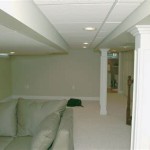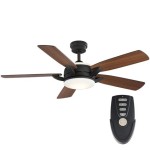Should Bathroom Walls and Ceiling Be the Same Color?
The decision of whether to paint bathroom walls and ceilings the same color is a multifaceted one, influenced by factors such as room size, desired aesthetic effect, and the specific nuances of the chosen color itself. While there's no single definitive answer, understanding the potential impacts of both approaches – using the same color versus different colors – can guide individuals toward the best choice for their particular bathroom.
Historically, ceilings were often painted white, a practice stemming from practical considerations related to light reflection and the perception of height. White paint reflects light effectively, brightening the room and making it feel more spacious. Additionally, a white ceiling can visually recede, creating the illusion of a higher ceiling, especially beneficial in rooms with lower ceiling heights. However, contemporary design trends have increasingly embraced bolder and more personalized color schemes, challenging these traditional norms. The use of color, including extending wall colors onto the ceiling, is now a common technique employed by interior designers to create specific atmospheres and visual effects.
The perceived size and shape of a room can be dramatically altered by the strategic application of color. A light color on both walls and ceiling can maximize the feeling of spaciousness, while darker colors can create a more intimate and cozy environment. The choice between these contrasting effects often hinges on the existing dimensions of the bathroom and the desired overall mood.
Maximizing Space: The Case for Unified Color
One of the primary arguments for painting bathroom walls and ceiling the same color revolves around the concept of visual continuity. When the eye doesn't encounter a distinct break between the wall and ceiling planes, the boundaries of the room become less defined. This blurring of lines can create a sense of expansiveness, making a smaller bathroom feel larger and more open. This effect is particularly pronounced when lighter colors are employed, as they naturally reflect more light and contribute to an airy atmosphere.
Furthermore, using a single color can simplify the design process and create a cohesive and unified look. It eliminates the challenge of selecting complementary or contrasting colors and ensures that the overall color scheme is harmonious. This can be especially beneficial for individuals who are less confident in their color selection skills.
A monochromatic color scheme, achieved by using variations of the same color (e.g., different shades or tints) on the walls and ceiling, falls under the umbrella of unified color approaches. This technique allows for subtle differentiation while maintaining a consistent color palette, adding visual interest without disrupting the sense of continuity.
The specific finish of the paint also plays a crucial role. In bathrooms, moisture-resistant paints with a matte or eggshell finish are generally recommended for both walls and ceilings. These finishes help to prevent mold and mildew growth and are easier to clean, which is essential in a high-humidity environment. Using the same finish on both surfaces further reinforces the sense of continuity and avoids unwanted visual distractions caused by differing sheens.
Defining Boundaries: The Case for Contrasting Colors
While a unified color scheme can enhance the feeling of spaciousness, using different colors for the walls and ceiling can serve other important design purposes. Contrast can add visual interest and depth to a room, highlighting architectural features and creating focal points. A contrasting ceiling color can draw the eye upwards, potentially accentuating ceiling details or creating a more dynamic spatial experience.
In bathrooms with high ceilings, a darker ceiling color can visually lower the ceiling height, making the room feel more proportionate and balanced. This is particularly effective in spaces where the high ceilings might otherwise feel overwhelming or impersonal. Conversely, painting the ceiling a lighter color than the walls can emphasize the height of the room, creating a sense of grandeur and airiness.
The choice of contrasting colors also allows for the introduction of more complex color schemes. A neutral wall color, such as gray or beige, can be paired with a bolder ceiling color to create a striking visual impact. This approach allows for greater flexibility in incorporating personality and style into the bathroom design.
However, using contrasting colors requires careful consideration of color harmony and balance. The colors should complement each other and create a cohesive overall aesthetic. Clashing colors can create a jarring and unpleasant effect, detracting from the overall design of the bathroom. It's often helpful to use a color wheel or consult with an interior designer to ensure that the chosen colors work well together.
Another consideration is the presence of architectural elements, such as crown molding or wainscoting. These features can be used as natural dividing lines between colors, creating a more defined and structured look. For example, painting the walls below the wainscoting one color and the walls above the wainscoting and the ceiling another color can add visual interest and dimension to the room.
Factors Influencing Color Selection
Beyond the considerations of room size and desired aesthetic effect, several other factors can influence the choice of colors for bathroom walls and ceilings. These factors include the existing lighting conditions, the style of the bathroom fixtures and accessories, and personal preferences.
Natural light plays a significant role in how colors are perceived. Colors will appear different in a bathroom with ample natural light compared to one with limited or no natural light. In bathrooms with limited natural light, lighter colors are often preferred to maximize brightness and create a more cheerful atmosphere. Darker colors can be used strategically to create a more dramatic and sophisticated look, but they should be balanced with adequate artificial lighting.
The style of the bathroom fixtures and accessories should also be taken into account when selecting colors. A contemporary bathroom with sleek, minimalist fixtures might benefit from a monochromatic color scheme or a palette of cool, neutral colors. A more traditional bathroom with ornate fixtures and classic detailing might be better suited to warmer, richer colors or a combination of complementary colors.
Ultimately, the choice of colors for bathroom walls and ceilings is a personal one. Individuals should select colors that they find visually appealing and that create the desired atmosphere in their bathroom. Experimenting with different color combinations and seeking inspiration from design magazines or online resources can help in making an informed decision.
The type of lighting used within the bathroom should also influence color choices. Incandescent lighting tends to bring out warmer tones in colors, while fluorescent lighting can make colors appear cooler. LED lighting offers a range of color temperatures, allowing for more precise control over the overall illumination and color rendition. It's important to test paint samples under the actual lighting conditions of the bathroom to ensure that the colors appear as desired.
The size and placement of mirrors can also affect the perception of color in a bathroom. Mirrors reflect light and color, potentially amplifying the effects of the chosen color scheme. Strategically placed mirrors can enhance the feeling of spaciousness and brightness, particularly in smaller bathrooms. However, mirrors can also reflect unwanted colors or create glare, so careful consideration should be given to their placement.

Bathroom Ceiling Paint Same Color As The Walls Da Kine Paints

Paint Ceilings Same Color As The Walls Morris Mansion

Color Drenching A Do Or Don T Kaitlin Madden Home Blogger

Why Painted Ceilings Are Essential In Any Room Architectural Digest

Our Tiny Bathroom Makeover With Colorblocked Walls Ceiling Jojotastic

Painting The Master Bathroom

Bathroom Ceiling Paint Same Color As The Walls Da Kine Paints

How To Make 8 Foot Ceilings Look Taller Erin Kestenbaum

Choosing Bathroom Paint Colors For Walls And Cabinets

Ceiling Ideas Great Lakes Ace Hardware
Related Posts








